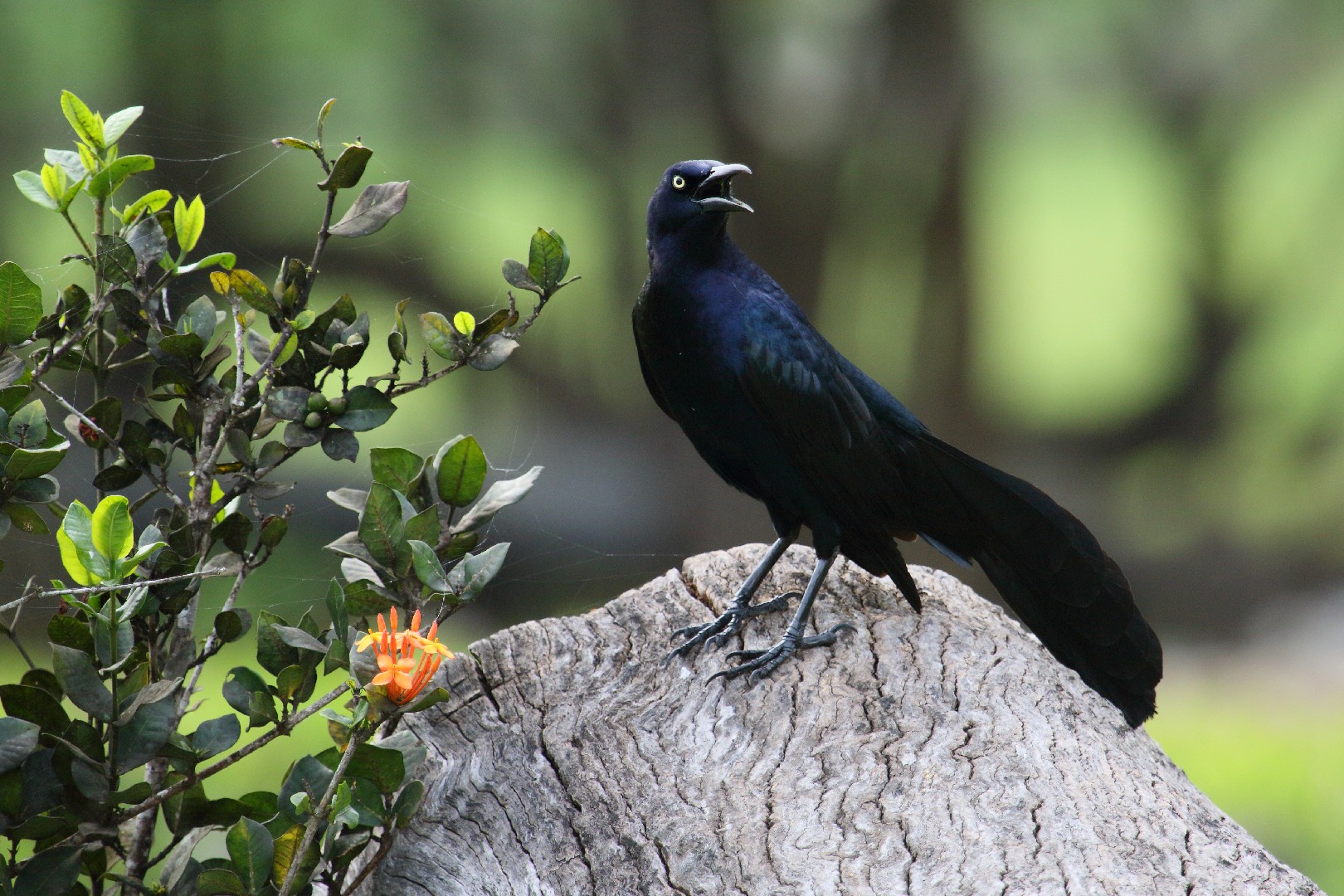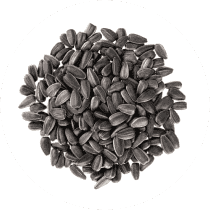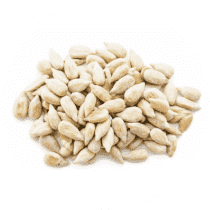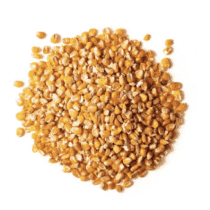Great-tailed Grackle
A species of Grackles Scientific name : Quiscalus mexicanus Genus : Grackles
Great-tailed Grackle, A species of Grackles
Botanical name: Quiscalus mexicanus
Genus: Grackles
Content
Description People often ask General Info
 Photo By Cephas , used under CC-BY-SA-4.0 /Cropped and compressed from original
Photo By Cephas , used under CC-BY-SA-4.0 /Cropped and compressed from original Description
The medium-sized great-tailed Grackle is notable for its long tail, shaped like a V, and deep black coloring offset by bright yellow eyes. This loud bird can be easily found just by following the sharp sounds of its calls and shrieks. Males in particular shriek and ruffle up their feathers to defend their territory or if they feel threatened.
Size
38 - 46 cm
Life Expectancy
7.7 years
Nest Placement
Tree
Clutch Size
1 - 5 eggs
Incubation Period
1 - 2 broods
Number of Broods
13 - 14 days
Nestling Period
20 - 23 days
Feeding Habits
Great-tailed Grackle's diet includes grains like corn and sorghum, fruits, and a substantial amount of animal matter, especially in summer and early fall. They consume insects, spiders, snails, amphibians, reptiles, small mammals, and bird eggs. Their foraging techniques are diverse, feeding on larvae in grasses, extracting invertebrates from soil, preying on cattle parasites, and opening corn husks.
Habitat
Great-tailed Grackle's habitat is diverse, ranging from urban to rural environments, including open areas like pastures and wetlands. They often inhabit human-modified landscapes such as agricultural regions and thrive in parks, lawns, and around refuse sites, utilizing trees or hedgerows near water sources. Dense forests, deserts, and arid prairies are less favorable to great-tailed Grackle.
Nest Behavior
Female great-tailed Grackle select the nesting site and construct the nest over 5 to 17 days, occasionally relocating due to site choice or social partners. Males may guard the site.
Nest Characteristics
Great-tailed Grackle typically builds nests as high as possible on trees, shrubs, or man-made structures, using grasses, bark, weeds, and unconventional materials like plastic. The nest, anchored to upright supports, features a mud or dung-lined cup, finished with soft grasses, measuring 7.5 inches across and 4 to 13 inches deep.
Dite type
Insectivorous
People often ask
General Info
Feeding Habits
Bird food type

Black Oil Sunflower Seeds

Hulled Sunflower Seeds

Safflower

Cracked Corn

Millet
Bird Feeder Type

Large Hopper

Platform

Ground
Sounds
Song
Recording location: Mexico
Song
Recording location: Mexico
Behavior
Great-tailed Grackle are social and highly adaptable birds, exhibiting distinct daily dynamics. In the mornings, small groups go their separate ways to forage in diverse environments including open fields and urban landscapes, often alongside other blackbird species. Come evening, they reconvene in massive, noisy roosts where their vocalizations create a cacophony. Great-tailed Grackle display complex social interactions, particularly evident as males engage in elaborate, aggressive displays to establish breeding territories. Such interactions can escalate to physical tussles as they vie for dominance and mating rights. Dominant males may form bonds with multiple mates, though both sexes can exhibit promiscuous mating behavior. Females take on the nurturing role, tending to the chicks with dedication while the males guard against threats.
Distribution Area
Great-tailed grackles expanded their breeding range by over 5500% by moving north into North America between 1880 and 2000, following urban and agricultural corridors. Their current range stretches from northwest Venezuela and western Colombia and Ecuador in the south to Minnesota in the north, to Oregon, Idaho, and California in the west, to Florida in the east, with vagrants occurring as far north as southern Canada. 